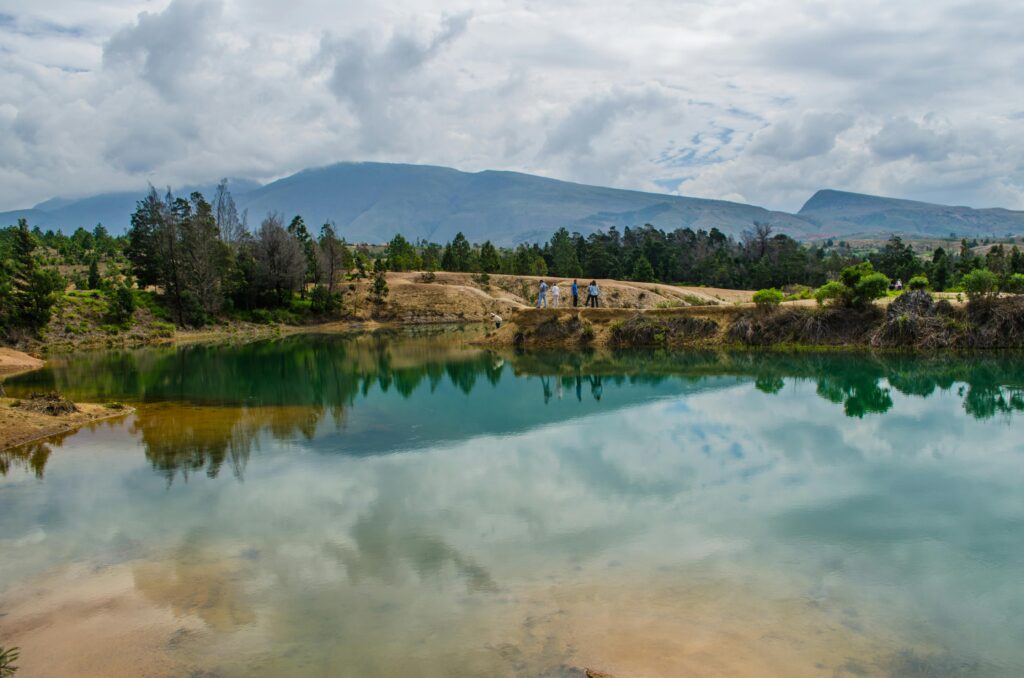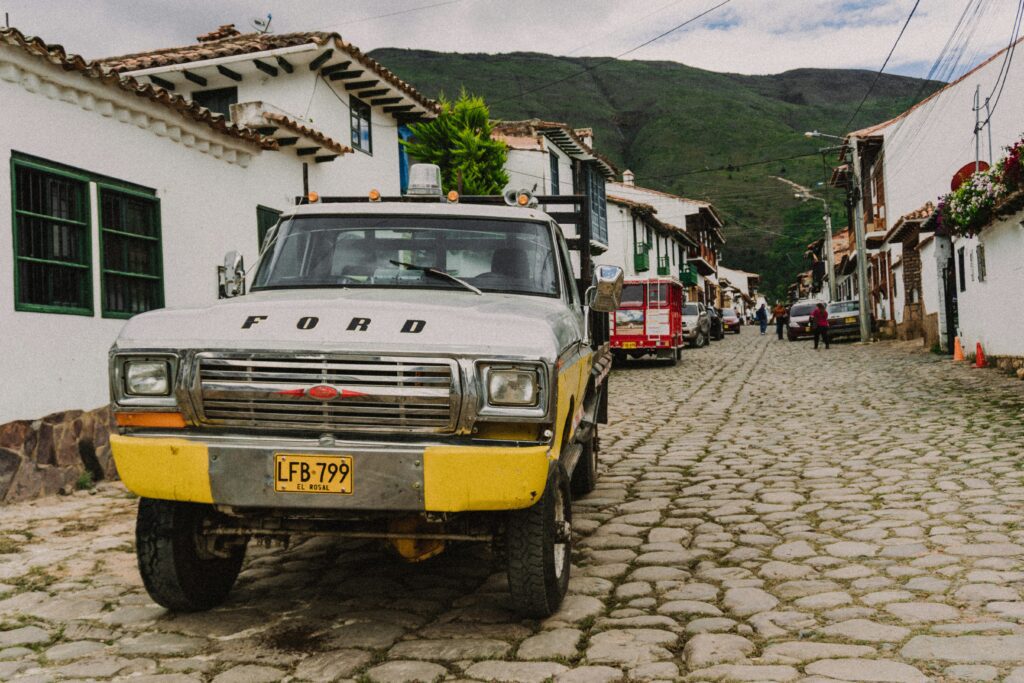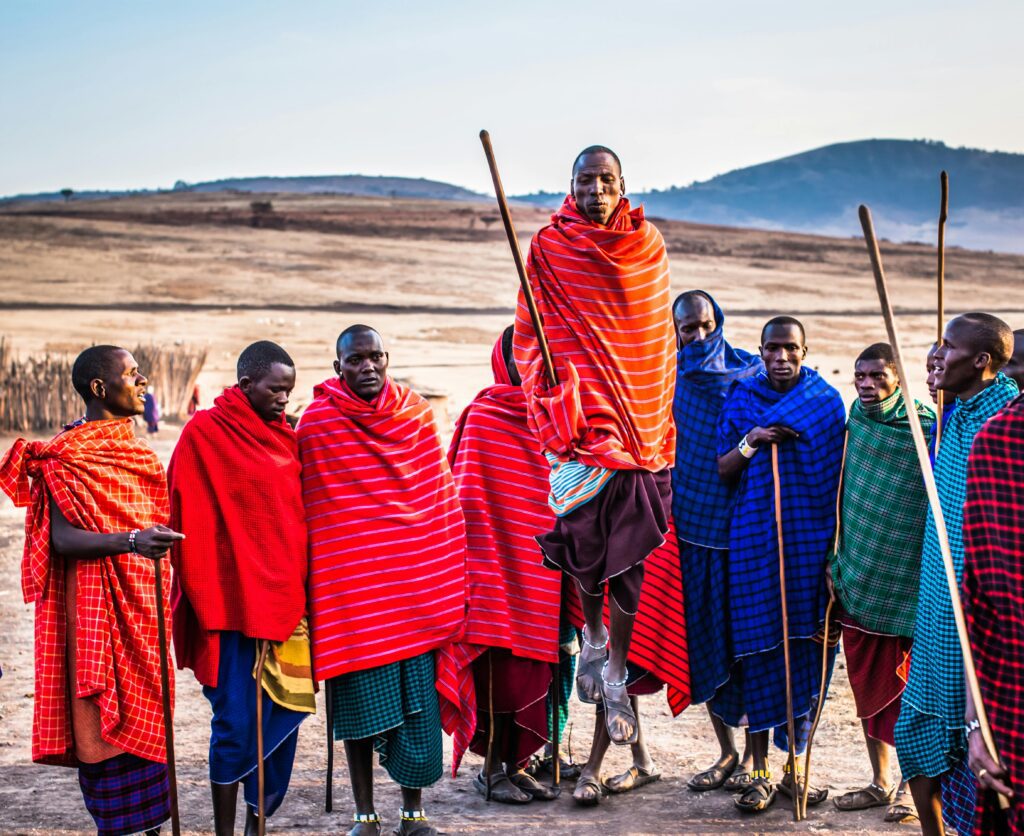Explore Villa de Leyva, Colombia’s colonial gem! Discover cobblestone streets, fossil wonders, and vibrant culture.
Introduction
Nestled in the rugged highlands of Boyacá, just three hours from Bogotá, Villa de Leyva is a timeless Colombian gem where cobblestone streets, whitewashed colonial facades, and Andean landscapes converge in breathtaking harmony. Declared a National Monument in 1954, this 16th-century town is one of the best-preserved examples of Spanish colonial architecture in South America. Its grand Plaza Mayor—one of the largest in the country—serves as the heart of its historic charm, surrounded by baroque churches, artisan shops, and cozy cafés.

Beyond its postcard-perfect center, Villa de Leyva captivates with its rich cultural heritage, from prehistoric fossils at the Paleontological Museum to the striking Casa Terracota, a colossal clay house that blends seamlessly into the earthy tones of the surrounding valleys. The town’s cool mountain climate (averaging 12–20°C / 54–68°F) makes it ideal for leisurely exploration, whether you’re hiking to waterfalls, sampling Boyacá’s hearty cuisine, or simply soaking in the tranquil ambiance.
Why Visit Villa de Leyva?
✔ Step back in time – Immaculate colonial architecture with minimal modern intrusions.
✔ Outdoor adventures – Hiking, horseback riding, and fossil hunting in surreal landscapes.
✔ Cultural richness – Muisca heritage, artisan markets, and vibrant festivals.
✔ Easy access from Bogotá – A perfect weekend getaway or extended retreat.
Map of Villa de Leyva, Colombia
Planning Your Trip to Villa de Leyva
Best Time to Visit
- Dry season (Dec–Mar & Jul–Aug): Sunny days, cool nights, ideal for sightseeing. Mornings are crisp, with golden light illuminating the cobblestones, while afternoons are perfect for alfresco dining in the plaza.
- Rainy season (Apr–Jun & Sep–Nov): Lush greenery blankets the surrounding hills, but trails can be muddy. The rain often clears by midday, leaving the air fresh and fragrant with eucalyptus and wildflowers.
- Festivals to catch:
- Festival of Lights (Dec 7–8): The plaza glows with thousands of candles honoring the Virgin Mary. Locals sing villancicos (carols), and the scent of hot chocolate and cinnamon fills the air.
- Kite Festival (Aug): The sky erupts with handmade kites, a tradition symbolizing freedom. Families picnic on the outskirts of town, flying kites against the backdrop of the Andes.
- Wine Harvest Festival (Feb): Celebrate local viticulture with tastings at Viñedo Ain Karim, accompanied by live folk music.
How to Get There
- From Bogotá:
- Bus: 3.5–4 hours (~$10–15 USD) from Terminal del Norte. Companies like Flota La Macarena offer comfortable coaches with Wi-Fi. Pro tip: Sit on the left for panoramic views of the Chicamocha Canyon.
- Private transfer: ~$50–80 USD (ideal for groups). Recommended providers include Taxis Verdes, which offer door-to-door service.
- Nearest airport: El Dorado International (Bogotá). From there, take a bus or arrange a private transfer.
Where to Stay
- Budget ($10–20/night):
- Rana Backpackers: A lively hostel with a courtyard hammock garden. The communal kitchen is stocked with fresh herbs from their garden.
- Hostal Renacer: Family-run, with a rooftop terrace offering sunset views of the plaza.
- Mid-range ($40–80/night):
- Hotel Casa Terra: A restored colonial house with exposed wooden beams and a fireplace in each room. Their breakfast includes homemade arepas with queso de hoja (leaf-wrapped cheese).
- Posada de San Antonio: A tranquil retreat with a cactus garden and outdoor Jacuzzi.
- Luxury ($100+/night):
- Hotel Duruelo: A 17th-century monastery turned boutique hotel. Book the “Mirador Suite” for a private balcony overlooking the valley.
- Casa Quintero: A chic, adults-only villa with a wine cellar and private chef.
Pro Tip: Book early on weekends—locals flock here for getaways! For a unique experience, consider a finca (farmstay) like Finca Carrizal, where you can milk cows at dawn.
Detailed 3-Day Itinerary
Day 1: Colonial Charm & Fossil Hunting

Morning:
– Breakfast at Café La Plaza: Order the arepas boyacenses (corn cakes with melted cheese) and a cup of chocolate santafereño—thick, spiced hot chocolate served with cheese for dipping. The café’s balcony overlooks the plaza, ideal for people-watching.
– Explore Plaza Mayor: Feel the uneven cobblestones underfoot as you admire the 14,000 m² square. Visit the Casa de la Real Fábrica de Licores, where colonial-era liquor was once produced.
– Iglesia de Nuestra Señora del Rosario: Step inside to see the gilded altarpiece and smell the lingering incense from morning mass.
Afternoon:
– Lunch at Mercado Municipal: Try ajiaco (a creamy potato-chicken soup) at Doña Ceci’s stall, or trucha (rainbow trout) at El Fogón de los Arrieros.
– El Fósil Museum: Marvel at the 120-million-year-old kronosaurus fossil, discovered by a local farmer in 1977. The museum’s curator often shares anecdotes about the dig.
– Pozos Azules: These turquoise pools, tinted by mineral deposits, are a 30-minute walk from town. Bring a swimsuit—the water is chilly but invigorating!
Evening:
– Sunset drinks at Plaza Mayor: Sip canelazo (a warm rum cocktail with cinnamon) from a street vendor. The plaza’s lamplights cast a golden glow on the white facades.
– Dinner at El Rincón de los Antiguos: Order the bandeja boyacense—a platter of grilled meats, beans, and almojábanas (cheese bread). The dining room feels like a colonial-era living room, with antique oil lamps and a crackling fireplace.
Day 2: Adventure & Artisan Culture
Morning:
– Cascada de La Periquera: A 2-hour hike through oak forests leads to this 50-meter waterfall. Listen for the calls of barranqueros (Andean motmots) along the trail.
– Casa Terracota: Artist Octavio Mendoza’s clay masterpiece feels like a giant pottery kiln. Climb to the rooftop for 360° views of the valley.
Afternoon:
– Lunch in Ráquira: This village, 30 minutes away, is a kaleidoscope of colorful buildings. Eat at El Zaguan de los Recuerdos, where the mute santandereano (a meat-and-vegetable stew) is served in hand-painted bowls.
– Shopping: Buy a ruana (wool poncho) from Tejeduría Artesanal or a ceramic chiva (traditional bus) from Taller Don Bosco.
Evening:
– Observatorio Astronómico Muisca: Learn how the indigenous Muisca people tracked constellations. On clear nights, you can see the Milky Way arching over the Andes.
Day 3: History & Hidden Gems
Morning:
– El Infiernito: This pre-Columbian site, nicknamed “Little Hell,” features phallic monoliths used for astronomical rituals. The onsite guide explains their connection to fertility rites.
– Café San Alberto: A coffee tasting here is a must. Try the Bourbon Rosado variety, with notes of red berries and honey.
Afternoon:
– Convento del Santo Ecce Homo: A 17th-century monastery with a serene cloister garden. The resident nuns sell homemade bocadillos (guava paste).
– Viñedo Ain Karim: Tour the vineyards and sample uvas isabelas (a local grape variety). Their sparkling wine pairs perfectly with queso campesino.
Evening:
– Farewell dinner at La Tienda de Teresa: Try the lomo al trago—beef tenderloin flambéed with local aguardiente. The restaurant’s courtyard is lit by hundreds of fairy lights.
Local Transportation Tips

- Walking: The town center is compact and pedestrian-friendly. Wear sturdy shoes—the cobblestones are uneven!
- Taxis: ~$2–5 USD for short rides. Ask your driver for recommendations—many double as informal guides.
- Bike rentals: ~$5–10/day. Bicicletas Don Juan offers maps to scenic routes like the Camino Real (a colonial-era road).
- Willys jeeps: Shared rides to nearby villages (~$3–5). Flag one down at the plaza’s northeast corner.
Budget Breakdown (Per Day)
| Category | Budget ($) | Mid-Range ($) | Luxury ($) |
|---|---|---|---|
| Accommodation | 10–20 | 40–80 | 100+ |
| Food | 5–10 | 15–25 | 30+ |
| Activities | 5–15 | 20–40 | 50+ |
| Transport | 2–5 | 10–20 | 30+ |
Safety & Cultural Etiquette
- Safety: Very low crime, but keep valuables secure in crowded areas like the mercado.
- Dress code: Shoulders and knees covered in churches. Locals appreciate modest attire.
- Greetings: Always say “buenos días/tardes” before asking questions. A handshake is customary.
- Tipping: 10% in restaurants. For guides, $2–5 USD is appreciated.
- Local quirk: Don’t be surprised if strangers greet you with “¿A cómo?”—a regional way to say “How are you?”
Frequently Asked Questions (FAQ)
1. Is Villa de Leyva worth visiting?
Absolutely! It’s one of Colombia’s most well-preserved colonial towns, offering history, nature, and culture in one package. The slower pace of life feels like a balm after Bogotá’s chaos.
2. How many days do I need?
2–3 days is ideal to cover the highlights without rushing. Add an extra day if you want to explore nearby villages like Sutamarchán (famous for its longaniza sausage).
3. Can I visit Villa de Leyva as a day trip from Bogotá?
Possible but tiring (7+ hours round-trip). Overnight stays let you experience the magical early mornings when mist hugs the mountains.
4. What’s the best local dish to try?
Ajiaco santafereño (hearty chicken soup) or cuy (roasted guinea pig, a regional delicacy). For the adventurous, hormigas culonas (big-bottomed ants) are a crunchy snack.
5. Are credit cards widely accepted?
Most places accept cards, but carry cash (COP) for small vendors. ATMs are scarce—withdraw money in Bogotá.
6. Is English widely spoken?
Basic English is understood in tourist areas, but learning a few Spanish phrases (“¿Cuánto cuesta?” = “How much?”) goes a long way.
7. What’s the best souvenir to bring home?
Handmade ceramic pottery from Ráquira or a bottle of vino de mora (blackberry wine) from Ain Karim.
Final Thoughts
Villa de Leyva is more than a destination—it’s an experience. Whether you’re wandering its cobblestone alleys, uncovering ancient fossils, or sipping wine under the stars, this town leaves an indelible mark. As the locals say: “No es un pueblo, es un sentimiento” (“It’s not a town, it’s a feeling”).
Start planning your Villa de Leyva adventure today—before the secret gets out!
Keywords:
“Villa de Leyva Colombia travel guide 2024”
“best things to do in Villa de Leyva Colombia for first-time visitors”
“is Villa de Leyva worth visiting? (Colombia’s colonial gem)”
“how to get from Bogotá to Villa de Leyva: buses tours & private transfers”
“hidden gems in Villa de Leyva Colombia: off-the-beaten-path attractions”



